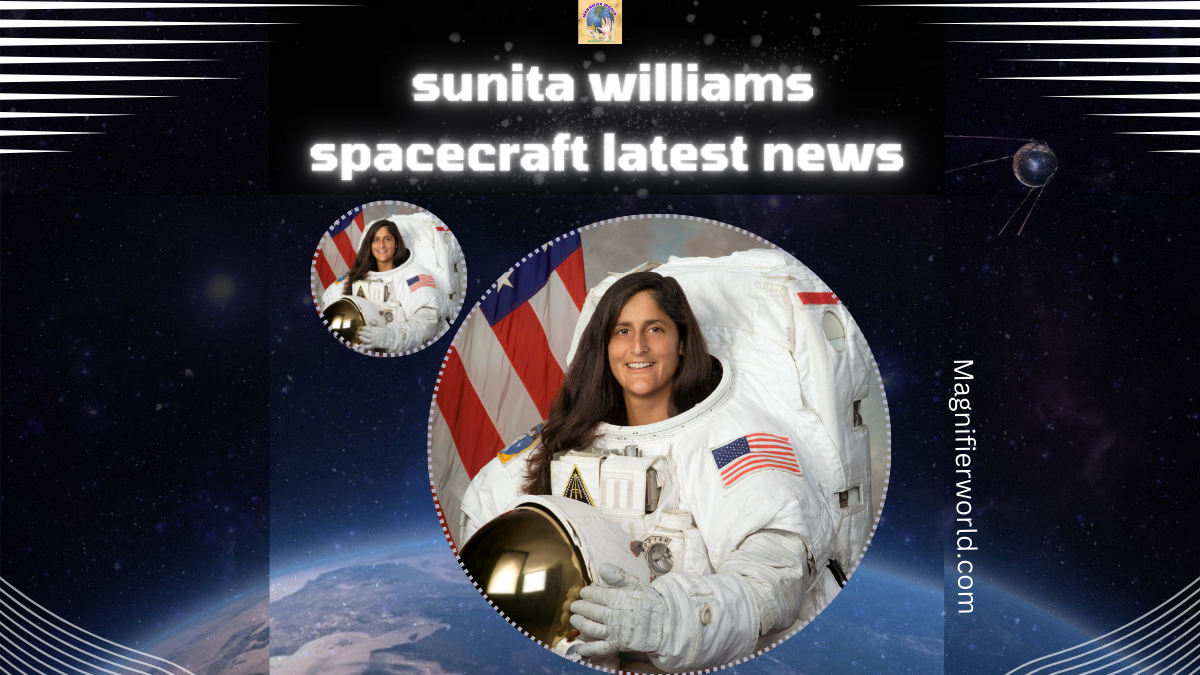Studying alien spacecraft involves analyzing various reported sightings, and deciphering potential technological advancements. And exploring the implications for our understanding of the universe. Science fiction books, films, and widely known media have all explored the idea of alien. People traveling through orbit in highly developed technical spacecraft. However, the tantalizing potential that this kind of spaceships might exist in reality exists outside the world of fiction. Arousing the keen curiosity and conjecture of researchers in astronomy researchers, people aficionados together.
SETI, or the search for extraterrestrial intelligence, represents an organized scientific endeavor to discover signs of alien civilizations. Despite the absence of solid proof to date, researchers remain actively engaged in the pursuit. Exciting to consider the idea of coming across extraterrestrial aircraft. The recent finding of alien worlds, those worlds circling planets far beyond our solar system. Has increased conjecture over the possibility of sentient life existing outside of Earth. Some experts have gone so far as to suggest that many of the abnormalities observed over time. Including mysterious astronomical occurrences or unidentified flying objects (UFOs), may be the result of alien spaceships.
Advancements in Space Exploration Technology
Images of alien spacecraft in the media range greatly, from modern, sleek looks to unusual, alien shapes. Star Wars, Independence Day, and Closer Encounters of the Third Kind. These are just a few of the movies that have memorialized famous spacecraft. Designs that have become deeply embedded in popular culture. Those creative representations frequently arouse curiosity and amazement, sparking debates over the potential technical might of otherworldly species.
The possibility of encountering alien spacecraft raises profound questions about humanity’s place. In the cosmos and our relationship with other intelligent beings. It prompts philosophical reflections on the nature of life, consciousness, and the universe itself. While the prospect of such an encounter is both exhilarating and daunting. It also presents unique opportunities for scientific discovery and exploration.
In recent years, advancements in space exploration technology have brought us closer than ever to potentially detecting or encountering alien spacecraft. Initiatives such as the search for biosignatures on exoplanets, the study of interstellar objects like ‘Oumuamua. And the development of next-generation space telescopes offer unprecedented opportunities to explore the cosmos and expand our understanding of the universe.
Introduction to Alien Spacecraft
The notion of extraterrestrial life and the potential for alien spacecraft to travel. The vast cosmos has for centuries captivated mankind. When one imagines alien spaceships, one thoughts of highly developed civilizations, and cutting-edge technology. And the possibility of interstellar travel comes to mind. Although reports of unidentified flying objects (UFOs) have generated discussions and conjecture. The reality of extraterrestrial spacecraft continues to be a topic of interest for both the scientific community and the general public.
The idea of extraterrestrial spacecraft is ingrained in human history and culture. Stories of contact with extraterrestrial entities, are frequently portrayed as gods or celestial messengers. Have been passed down through the years by cultures all across the world. These tales, which can be found in religious writings, folklore, and ancient texts. Demonstrate humanity’s unwavering curiosity regarding the potential of existence.
Advancements in Space Exploration Technology
The concept of extraterrestrial spacecraft has been popular in modern times through a variety of media. Such as books, movies, and television series. Science fiction writers like H.G. Wells, Arthur C. Clarke, and Isaac Asimov have captivated readers all around the world with their study of themes like space travel, extraterrestrial encounters, and cutting-edge technology. Famous movies such as “E.T. the Extra-Terrestrial,” “Close Encounters of the Third Kind,”. “Independence Day” have contributed to the public’s view of alien spaceships and stoked conjecture about the secrets of the universe.
The scientific exploration of extraterrestrial spaceships is still a subject of serious inquiry and research, despite the prominence of fictitious portrayals in the media. Projects like the Breakthrough Listen initiative and the Search for Extraterrestrial Intelligence Institute (SETI Institute) use sophisticated telescopes and detecting techniques to search the skies for signals from extraterrestrial civilizations.
Humanity has been able to travel deeper into space than ever before because to developments in space exploration technologies in recent decades. In an effort to establish communication with extraterrestrial life, spacecraft like Voyager 1 and Voyager 2 have set out on interstellar voyages with messages from Earth. The probability of habitable planets outside of our solar system has increased as a result of programs like NASA’s Kepler Space Telescope, which has discovered thousands of exoplanets around far-off stars.
Theoretical Framework: Possibilities of Interstellar Travel
Science fiction authors, scientists, and the general public have long been captivated by and intrigued by the idea of interstellar travel—traveling between stars in the immensity of space. The investigation of prospective methods and equipment that might one day make interplanetary travel feasible has been prompted by advancements in theoretical physics, despite the enormous distances and difficult obstacles involved.
The theory of relativity sheds light on the nature of space-time and the viability of covering great distances in a reasonable amount of time when it comes to interstellar travel. Wormholes are a theoretical idea that pertains to interstellar travel. They are hypothetical tunnels or shortcuts across space-time that have the ability to connect remote regions of the universe.
Depictions in Popular Culture: From Fiction to Reality
Popular culture’s depictions of interstellar travel have greatly influenced public opinion and stoked curiosity about the idea. The concept of traveling between stars has captivated audiences worldwide, from popular science fiction books to hugely successful movies and TV shows. Science fiction has always been a rich source for investigating the potential of interstellar travel. Fictional accounts of space travel and interactions with extraterrestrial civilizations have been introduced to readers through works like Arthur C. Clarke’s “2001: A Space Odyssey,” Isaac Asimov’s “Foundation” trilogy, and Frank Herbert’s “Dune” saga. These tales frequently feature cutting-edge technology, extraterrestrial planets, and grand cosmic expeditions, encouraging readers to ponder the potential of interstellar travel.
Interstellar travel has also been a popular concept in television and movies in addition to literature. Renowned series like “Star Trek” and “Star Wars” have become cultural icons. Enthralling millions of people with their visions of heroic space battles and interplanetary exploration. These series have given viewers a peek into a vividly conceived universe of exploration. And discovery by introducing them to a wide range of alien species, future spacecraft, and far-off places.
Even if the majority of interstellar travel that is portrayed in popular culture is still based solidly in fantasy, recent developments in science and technology have made the idea more plausible than ever. innovations in domains like propulsion.
Scientific Exploration and Study of Alien Spacecraft
Unidentified flying objects (UFOs) and unidentified aerial phenomena (UAP) are terms used to describe the scientific investigation and study of alien spaceships. This topic is intricate and multidimensional, encompassing a wide range of disciplines such as physics, aerospace engineering, psychology, and astronomy.
Lack of empirical data is one of the main obstacles to understanding alien spacecraft. Evidence of extraterrestrial visitation has proven elusive despite decades’ worth of stories of UFO sightings and interactions. The majority of reports of UFO sightings are likely the result of artificial or natural phenomena like weather balloons, airplanes, or anomalies in the atmosphere.
The scientific community has recently shown a revived interest in researching UFOs and UAPs, partly due to the revelation of previously classified government papers and the founding of dedicated research organizations. The objective of these endeavors has been to gather and examine information from reliable eyewitness reports, radar observations, and additional sources in order to spot trends and irregularities that could provide insight into the phenomenon.
Technological developments have also been essential to the scientific investigation of extraterrestrial spacecraft. Researchers have been able to gather more precise information about UFO/UAP sightings thanks to high-resolution cameras, radar systems, and other sensor technologies. This has made it possible to conduct more thorough analysis and inquiry. Furthermore, advancements in data analysis methods like artificial intelligence and machine learning.
Philosophical Implications and Humanity’s Quest for Cosmic Understanding
Beyond the purview of science, the study of alien spacecraft and the hunt for extraterrestrial intelligence (SETI) have significant philosophical ramifications. Humanity’s innate curiosity about our place in the cosmos and our connection to the larger universe is at the heart of our interest with the potential of life beyond Earth.
The unique place of humanity in the universe is one of the most significant philosophical concerns raised by the existence of alien spaceships. Humans have debated whether or not there are other sentient species in the universe for ages. Or if we are the only ones. The discovery of alien spacecraft would provide compelling evidence that we are not alone, challenging long-held beliefs about our significance and place.
Our knowledge of the universe and our role in it would be significantly altered by the discovery of alien spacecraft. It would compel us to reevaluate our cosmic viewpoint. And face the prospect that we are but a tiny portion of a vast and mysterious universe. This realization could have profound philosophical and existential implications, challenging our beliefs about the nature of reality and our role.
Conclusion:
It’s crucial to recognize the deep philosophical ramifications and humanity’s pursuit of cosmic understanding. That underlie this interesting subject as we come to the end of the exploration of alien spacecraft. The study of alien spaceships explores profound existential issues like the nature of reality. Our place in the cosmos, and the potential existence of extraterrestrial life. It goes beyond simple scientific research.
Realizing our cosmic connection is one of the most significant philosophical ramifications of the presence of alien spacecraft. If intelligent life beyond Earth is found, it will put our anthropocentric worldview to the test and make us face the vastness and diversity of the universe. It would remind us that we are but one species among countless others, inhabiting a tiny speck of dust in the vast.
In addition, the presence of extraterrestrial spacecraft prompts inquiries into the nature of civilization, consciousness, and intelligence. How advanced is their technology, how well-organized is their society, and what are their cultural values if aliens can travel such great distances to visit Earth? What knowledge could we get from interacting with societies that have developed apart from our own?
In addition, studying extraterrestrial spacecraft forces us to reconsider how we interact with nature and where we fit in. A revitalized commitment to environmental stewardship and a sense of global consciousness. This may result from realizing that we are not alone in the cosmos. It might motivate us to put aside our small differences and come together as a species to confront existential issues.
FAQ
1. Are there any confirmed sightings of alien spacecraft?
While there have been numerous reports and sightings of unidentified flying objects (UFOs) or unidentified aerial phenomena (UAP). None have been definitively confirmed as alien spacecraft by scientific consensus. Many sightings can be attributed to natural phenomena, human-made objects, or misinterpretations of aerial phenomena.
2. What evidence supports the existence of alien spacecraft?
Evidence supporting the existence of alien spacecraft primarily consists of anecdotal reports. Eyewitness testimonies, and photographs or videos of unidentified aerial phenomena. However, such evidence is often subjective and inconclusive, lacking scientific verification or reproducibility.
3. Why haven’t we made contact with extraterrestrial civilizations if alien spacecraft exist?
The lack of direct contact with extraterrestrial civilizations, despite the existence of purported alien spacecraft sightings, can be attributed to the vastness of space. The limitations of human technology, and the challenges of interstellar communication. The distances between stars are immense, making interstellar travel and communication exceedingly difficult.
4. How do scientists study and investigate reports of alien spacecraft?
Scientists study reports of alien spacecraft through various methods, including data analysis, eyewitness interviews, and field investigations. Researchers employ scientific rigor and critical thinking to evaluate the credibility of UFO/UAP sightings. Often seeking natural or conventional explanations before considering extraterrestrial hypotheses.
5. What are the potential implications of discovering alien spacecraft?
The discovery of alien spacecraft would have profound implications for science, philosophy, and society. It could revolutionize our understanding of the cosmos, challenge our anthropocentric worldview, and inspire new avenues of scientific inquiry and technological innovation. Additionally, it could prompt philosophical reflections on our place in the universe and our relationship with extraterrestrial intelligence. However, such a discovery would also raise ethical, cultural, and existential questions that would require careful consideration and deliberation.





